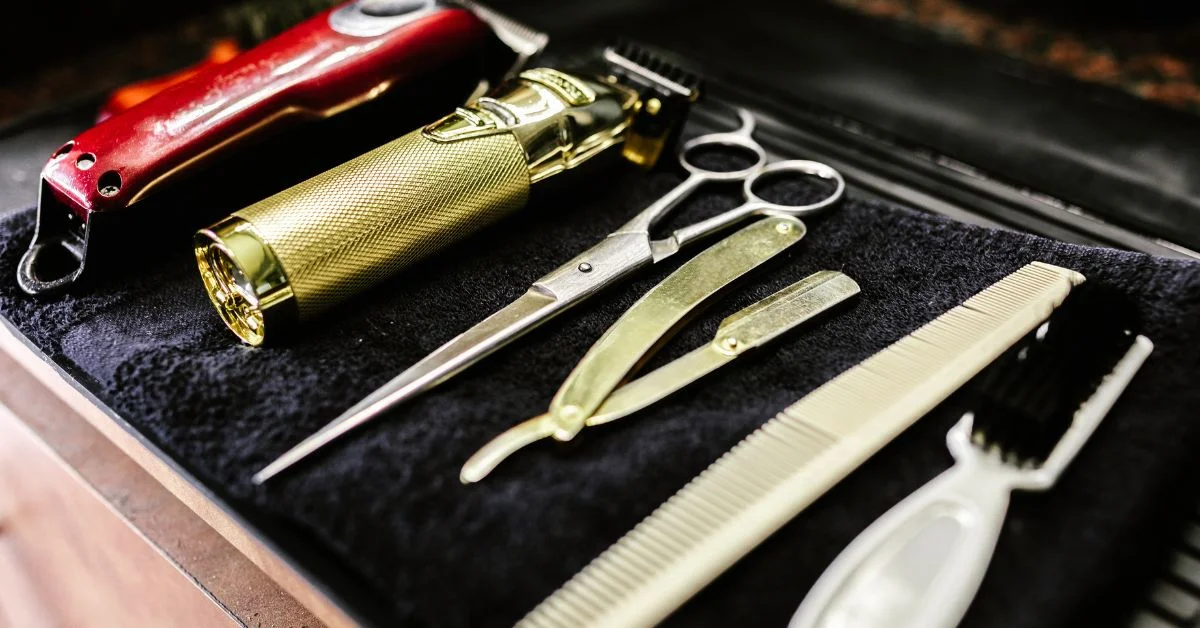Whether you’re crafting handmade books, processing packaging in a factory, or creating couture fashion, the concept of creasing—controlled folding without cracking—plays a crucial role in the finished product’s appearance and function.
While often overlooked, the creaser is one of the most versatile and quietly essential tools across printing, fashion, bookbinding, leatherworking, and packaging. It ensures that folds are clean, edges are defined, and materials don’t crack, stretch, or distort.
This guide will walk you through the many types of creasers, how they work, their industrial and creative applications, and how to choose the right one for your task. Whether you’re an artist, designer, or production manager, understanding how and when to use a creaser can elevate your output—both aesthetically and structurally.
What Is a Creaser?
A creaser is a tool or machine used to make a controlled, indented fold line in a material—typically paper, cardboard, leather, or fabric. The purpose is to guide folding without damaging the integrity of the material. A properly executed crease allows the material to bend cleanly and consistently without breaking fibers, cracking surface finishes, or creating irregular folds.
Creasing is fundamentally different from cutting. While a cutter separates, a creaser reshapes by applying pressure along a targeted line.
The Principle Behind Creasing
To understand the importance of a creaser, it helps to know what happens during a fold. When you bend a material, you’re compressing one side and stretching the other. Without a predefined crease line, this can lead to:
- Cracks on coated papers or painted surfaces
- Uneven or misaligned folds
- Weak points in structural packaging
- Deformed leather or fabric in garment design
A crease reduces internal stress, guiding the material to fold along a specific path with minimal resistance. This is why the creaser is considered both a technical and a design tool.
Common Types of Creasers
This come in many forms—manual, mechanical, industrial, and digital—depending on the scale and precision required.
1. Manual Creasers
Used in arts and crafts, bookbinding, and leatherwork.
- Bone Folder: A classic hand tool used by artists and bookmakers to press paper or leather along a fold.
- Stylus or Scoring Tool: A pen-shaped tool with a rounded tip used to create fold lines in cardstock and paper crafts.
- Leather Creaser: A handheld tool that creates decorative or functional grooves in leather.
Best For: Small projects, hand-bound books, journals, crafting, calligraphy, and custom packaging.
2. Mechanical/Rotary Creasers
These machines use a set of rollers or blades to crease at high volume.
- Rotary Creasing Machine: Common in print shops for creasing brochures, greeting cards, and photo books before folding.
- Scoring Wheels: Attached to die-cutting or plotter machines to score and crease simultaneously.
Best For: Mid-sized production, digital printing operations, on-demand finishing.
3. Industrial Creasing Machines
Used in large-scale manufacturing, such as packaging and textiles.
- Platen Creasers: Use heat and pressure for deep, precise creases in thick materials.
- Die-Cutting Presses with Crease Rules: Combine cutting and creasing in one pass for packaging, cartons, and folding boxes.
Best For: Mass production of retail packaging, folders, envelopes, and folding cartons.
4. Heat Creasers
These apply both heat and pressure for shaping thermoplastics, coated papers, or leather.
- Edge Creasing Machines (Leather): Heat-enabled tools that burnish or mark leather for seams or edges.
- Thermal Creasers: Used on synthetic materials or laminated papers that resist mechanical creasing.
Best For: Premium leatherwork, specialty printing, and high-gloss surfaces.
Applications Across Industries
Creasers may be humble in form, but they are essential in various sectors. Here’s how they’re used:
Bookbinding and Publishing
- Creates spine folds for hardcovers and softcovers
- Ensures clean, professional-looking edges in journals, brochures, and catalogs
- Used in conjunction with folding and trimming equipment
Packaging and Folding Cartons
- Essential for dieline packaging where folds define structure
- Prevents cracking in printed or laminated boxes
- Used in pharmaceutical, food, and luxury retail packaging
Arts, Stationery, and Scrapbooking
- Creases in greeting cards, invitation suites, and origami
- Allows for custom folding patterns in wedding and event stationery
- Enables layered folding in pop-up cards and interactive paper art
Fashion and Leather Goods
- Prepares leather edges for stitching or gluing
- Adds aesthetic lines to belts, bags, and wallets
- In garment manufacturing, creasers are used in pleating and seam definition
Printing and Finishing
- Digital print shops use creasers to finish short-run jobs without damaging toner
- Prevents surface cracking on thick brochures or photo books
Choosing the Right Creaser for Your Needs
Before you purchase or use a creaser, consider the following factors:
1. Material Type
- Paper/Cardstock: Choose scoring wheels or bone folders
- Leather: Use heated creasers or manual edge tools
- Plastic/Foil/Laminated Paper: Look for heated creasing options
2. Production Volume
- Low Volume: Manual tools
- Mid Volume: Tabletop rotary machines
- High Volume: Automated industrial creasers with feed trays
3. Precision Requirements
- Handmade projects need fine control
- Packaging design demands exact alignment with cut lines
- Artistic work may prioritize aesthetics over speed
4. Budget
- Manual tools can be as low as $5–$50
- Entry-level machines range from $500–$3,000
- Industrial machines can exceed $25,000
The Difference Between Creasing and Scoring
These terms are often used interchangeably but differ in technique and purpose:
- Scoring: Refers to cutting a shallow groove in the material to guide folding. It often weakens the material slightly.
- Creasing: Compresses and displaces the material along a line without cutting, preserving structural integrity.
In commercial printing, both may be used together: a score may be applied to rigid stocks, followed by a crease to ensure a clean fold.
Maintenance and Best Practices
Regardless of size or type, proper use and maintenance of your creaser ensure long-term performance.
Clean Crease Channels Regularly
Paper dust, adhesive, or debris can accumulate in grooves or rollers.
Use the Right Pressure
Too much pressure can tear paper or distort leather; too little results in soft, ineffective creases.
Align Materials Carefully
Misalignment can result in angled folds or inconsistent results—especially critical in packaging.
Store Tools Properly
Bone folders should not warp. Heated creasers should be cooled before storage.
The Role of Digital Creasers in Modern Workflow
As digital printing has surged—particularly in short-run jobs—creased finishes have evolved to keep up.
Modern print shops use digitally programmed creasers to:
- Handle multiple crease locations per sheet
- Automatically adjust for paper thickness
- Integrate with folding, perforating, and cutting systems
This has made the creaser as essential to a print room as the printer itself.
Innovations in Creasing: What’s New in 2025
Sustainable Materials
With eco-packaging trends, creasers now adapt to recyclable and biodegradable boards, which behave differently under pressure.
AI-Powered Crease Calibration
Industrial systems with sensors and AI feedback loops can now auto-correct misaligned sheets and adjust pressure dynamically.
Multi-Function Machines
Machines that crease, cut, and fold in one pass are gaining popularity for efficiency and reduced labor needs.
Conclusion
The creaser may not get much attention in the broader conversation about design, craftsmanship, or production, but it’s one of the quiet champions of quality. From handcrafted stationery to industrial packaging, it ensures that folds are intentional, materials are preserved, and the final product feels considered and complete.
As materials evolve, and expectations for visual polish and structural integrity grow, the creaser continues to adapt—getting smarter, more efficient, and more precise. Whether you’re folding wedding invitations by hand or processing thousands of cartons per hour, mastering the creasing process can mean the difference between amateur and professional, functional and flawed.
In a world increasingly defined by instant output and mass production, this remains a tool that demands care, understanding, and—ultimately—respect.
FAQs
1. What is the difference between a creaser and a scorer?
A creaser compresses material without cutting it, while a scorer makes a partial cut or indentation to aid folding. Both guide the fold but serve different purposes.
2. Can you crease by hand without a tool?
Yes, but results will be inconsistent. A bone folder or even the back of a spoon can help, but dedicated tools produce cleaner lines.
3. Is creasing necessary for all folding projects?
Not always. Thin papers fold easily without damage, but thicker stocks, coated materials, and leather benefit greatly from creasing.
4. Are there creasing tools for fabric?
In fashion, these are used for pleats and hems. Some are thermal, especially in synthetic fabrics that hold shape when heat-set.
5. Can I use one creaser for all materials?
No. Paper, leather, and plastic have different behaviors. Using the correct type of creaser for your material ensures optimal results.
For more information, click here.









